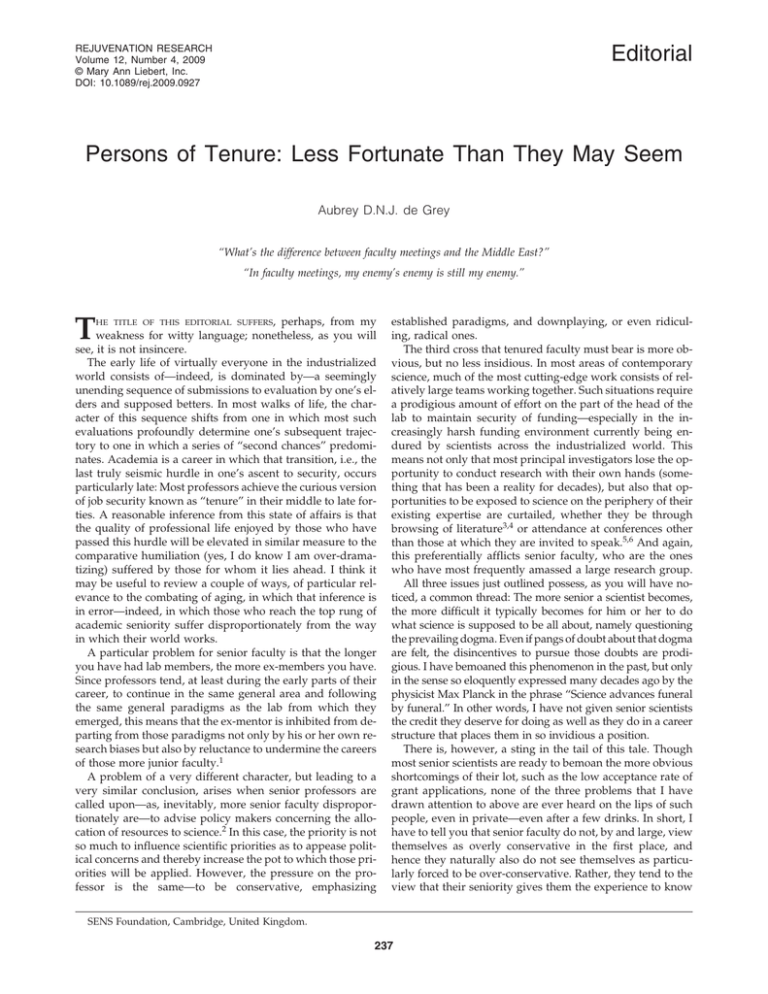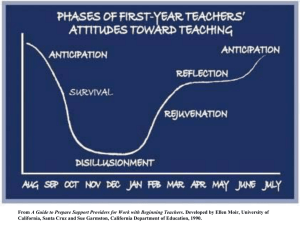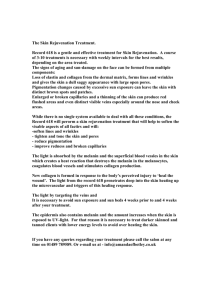Persons of Tenure: Less Fortunate Than They May Seem
advertisement

Editorial REJUVENATION RESEARCH Volume 12, Number 4, 2009 © Mary Ann Liebert, Inc. DOI: 10.1089/rej.2009.0927 Persons of Tenure: Less Fortunate Than They May Seem Aubrey D.N.J. de Grey “What’s the difference between faculty meetings and the Middle East?” “In faculty meetings, my enemy’s enemy is still my enemy.” T HE TITLE OF THIS EDITORIAL SUFFERS, perhaps, from my weakness for witty language; nonetheless, as you will see, it is not insincere. The early life of virtually everyone in the industrialized world consists of—indeed, is dominated by—a seemingly unending sequence of submissions to evaluation by one’s elders and supposed betters. In most walks of life, the character of this sequence shifts from one in which most such evaluations profoundly determine one’s subsequent trajectory to one in which a series of “second chances” predominates. Academia is a career in which that transition, i.e., the last truly seismic hurdle in one’s ascent to security, occurs particularly late: Most professors achieve the curious version of job security known as “tenure” in their middle to late forties. A reasonable inference from this state of affairs is that the quality of professional life enjoyed by those who have passed this hurdle will be elevated in similar measure to the comparative humiliation (yes, I do know I am over-dramatizing) suffered by those for whom it lies ahead. I think it may be useful to review a couple of ways, of particular relevance to the combating of aging, in which that inference is in error—indeed, in which those who reach the top rung of academic seniority suffer disproportionately from the way in which their world works. A particular problem for senior faculty is that the longer you have had lab members, the more ex-members you have. Since professors tend, at least during the early parts of their career, to continue in the same general area and following the same general paradigms as the lab from which they emerged, this means that the ex-mentor is inhibited from departing from those paradigms not only by his or her own research biases but also by reluctance to undermine the careers of those more junior faculty.1 A problem of a very different character, but leading to a very similar conclusion, arises when senior professors are called upon—as, inevitably, more senior faculty disproportionately are—to advise policy makers concerning the allocation of resources to science.2 In this case, the priority is not so much to influence scientific priorities as to appease political concerns and thereby increase the pot to which those priorities will be applied. However, the pressure on the professor is the same—to be conservative, emphasizing established paradigms, and downplaying, or even ridiculing, radical ones. The third cross that tenured faculty must bear is more obvious, but no less insidious. In most areas of contemporary science, much of the most cutting-edge work consists of relatively large teams working together. Such situations require a prodigious amount of effort on the part of the head of the lab to maintain security of funding—especially in the increasingly harsh funding environment currently being endured by scientists across the industrialized world. This means not only that most principal investigators lose the opportunity to conduct research with their own hands (something that has been a reality for decades), but also that opportunities to be exposed to science on the periphery of their existing expertise are curtailed, whether they be through browsing of literature3,4 or attendance at conferences other than those at which they are invited to speak.5,6 And again, this preferentially afflicts senior faculty, who are the ones who have most frequently amassed a large research group. All three issues just outlined possess, as you will have noticed, a common thread: The more senior a scientist becomes, the more difficult it typically becomes for him or her to do what science is supposed to be all about, namely questioning the prevailing dogma. Even if pangs of doubt about that dogma are felt, the disincentives to pursue those doubts are prodigious. I have bemoaned this phenomenon in the past, but only in the sense so eloquently expressed many decades ago by the physicist Max Planck in the phrase “Science advances funeral by funeral.” In other words, I have not given senior scientists the credit they deserve for doing as well as they do in a career structure that places them in so invidious a position. There is, however, a sting in the tail of this tale. Though most senior scientists are ready to bemoan the more obvious shortcomings of their lot, such as the low acceptance rate of grant applications, none of the three problems that I have drawn attention to above are ever heard on the lips of such people, even in private—even after a few drinks. In short, I have to tell you that senior faculty do not, by and large, view themselves as overly conservative in the first place, and hence they naturally also do not see themselves as particularly forced to be over-conservative. Rather, they tend to the view that their seniority gives them the experience to know SENS Foundation, Cambridge, United Kingdom. 237 238 when youngsters (or even mid-sters) with radical new ideas are merely in danger of distracting their field from its already perfectly satisfactory path.7–9 And that view is reinforced by the fact that it is very often correct. Unfortunately, however, sometimes it is not.10 References 1. de Grey ADNJ. The case for prioritizing research on late-onset life-extension interventions in mammals. Rejuvenation Res 2007;10:257–259. 2. Warner HR. Making the political case for biogerontology funding: A view from the trenches. Rejuvenation Res 2008; 11:485–488. 3. de Grey ADNJ. New developments at Rejuvenation Research: High impact factor, advance online publication and more. Rejuvenation Res 2007;10:125–126. 4. de Grey ADNJ. Rejuvenation Research in 2007. Rejuvenation Res 2008;11:837–839. de GREY 5. de Grey ADNJ. Understanding and tackling aging: Two fields communicating (a little) at last. Rejuvenation Res 2007; 10:637–640. 6. de Grey ADNJ. The need to debalkanize gerontology: A case study. Rejuvenation Res 2007;10:431–434. 7. Kurzweil R. Accelerating change. Rejuvenation Res 2007; 10:S37. 8. Mason C. Regenerative medicine 2.0. Rejuvenation Res 2007;10:S40–S41. 9. Rose MR. Slowing and then stopping aging. Rejuvenation Res 2007;10:S47. 10. de Grey ADNJ. Long live the unreasonable man. Rejuvenation Res 2008;11:541–542. Address correspondence to: Aubrey D.N.J. de Grey SENS Foundation United Kingdom E-mail: aubrey@sens.org This article has been cited by:



